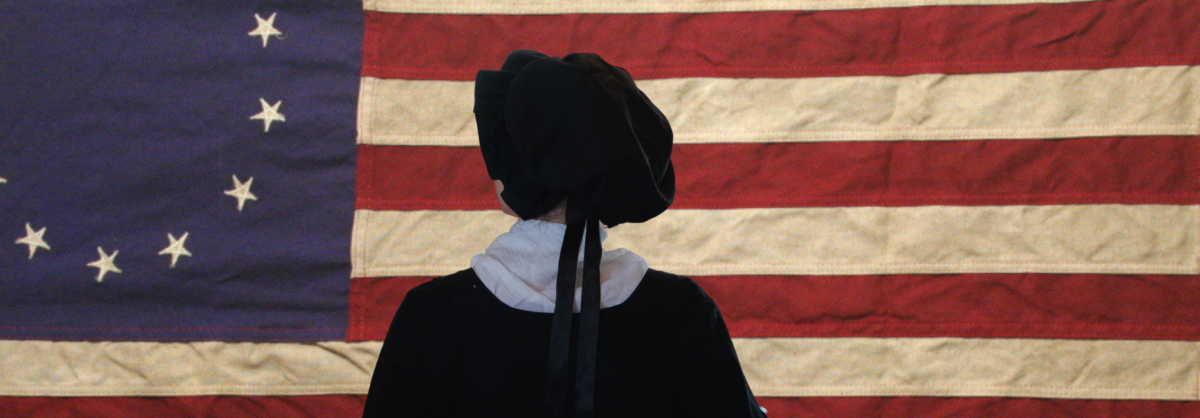Elizabeth Ann Seton was a child of the American Revolution.
Born in New York City in 1774, her early life was filled with Founding Fathers, political elites and even royalty. Her father was a loyalist who then served the new nation as a medical officer in New York, and she was friendly with those who fought the British at the highest levels.
Despite this, she never wrote much about politics – as a woman of that time simply wouldn’t have. But she witnessed a world of political drama that scaled multiple levels of society.
Ultimately, she played her role as a patriot by becoming a series of American “firsts” herself. She was the foundress of the first order of American sisters. She established the first Catholic school for girls. And, of course, she became the first native-born American to become a Catholic saint.
Here are eight instances that show how she rubbed elbows with some of the nation’s earliest heroes.
- Her neighbors were Alexander Hamilton and Aaron Burr.
Not only was Elizabeth neighbors with this famous dueling duo on Wall Street, but she makes a comment in her writings on hearing the bells toll for Alexander Hamilton’s death. It’s likely she would have attended his funeral were it not for her sister-in-law, Rebecca’s untimely death at the same time. In addition, Elizabeth’s father-in-law worked for Alexander Hamilton for a time when he was a bank teller.
- Elizabeth volunteered with Hamilton’s wife in charitable causes.
Elizabeth and Eliza Hamilton were drawn towards charitable work aimed at helping widows and single mothers (in a few short years, both women would find themselves each a widow and a single mother, as well) Elizabeth helped to found the Society for the Relief of Poor Widows with Small Children in 1797.
- Elizabeth’s father-in-law almost ran for president.
Though a loyalist during the war, William Seton was a member of the Committee of One Hundred and was encouraged to run for president.
- John Jay saved her father’s life.
John Jay was one of the founding fathers of the United States, an American statesman, patriot, and abolitionist – and the savior of Richard Bayley, Elizabeth’s father. In April 1788, the infamous Doctor’s Riot incident occurred in New York City in response to the discontent of the public upon the mass illegal procurement of corpses on behalf of doctors (Dr. Bayley, who later served as New York’s public health officer, shared in a public statement that he had never obtained any human bodies from graveyards for the purpose of dissection). Elizabeth records fearing the house would be burned to the ground during the riots, but John Jay intervened and saved her father’s life.
- George Washington hand-picked her friend to be the Consul-General to Italy.
Filippo Filicchi was the Consul-General for Italy from the U.S in 1794. The Filicchi family were close friends of Elizabeth’s and played a pivotal role in her conversion to the Catholic faith.
- Charles Carroll’s granddaughters attended her school.
The granddaughters of Charles Carroll, the only Catholic signer of the Declaration of Independence, attended Mother Seton’s school in Emmitsburg. Elizabeth was also friends with Charles Carroll’s other granddaughters when she lived in Baltimore, all of whom married royalty in Europe. One of these sisters, Marianne Caton was the sister-in-law to Elizabeth (Betsy) Patterson Bonaparte who married Napoleon Bonaparte’s brother and had a son, Jérôme. Napoleon was furious at his brother’s marriage and convinced his brother to abandon Betsy. Jerome then grew up in America and attended Mount St. Mary’s University, just three miles from Elizabeth’s academy. Due to the proximity and kinship with his mother, it is very likely Elizabeth knew Napoleon’s nephew.
- Her best friend’s husband was a senator.
One of Elizabeth’s dearest friends was Julia Scott, whose husband served as a U.S. Senator. He served as the Secretary of State of New York from 1784 until his death in 1798.
- Multiple presidents have visited the Seton Shrine.
In 1834, William Henry Harrison, prior to his presidency, visited St. Joseph’s Academy, the school Mother Seton founded in Emmitsburg, MD. President Dwight D. Eisenhower (whose farm is located visited just a few miles away from the academy) and his wife used the library at St. Joseph’s College. President Jimmy Carter visited the Shrine’s Basilica in 1978. In 2015, President Barack Obama reached out to the Seton Shrine and requested gift ideas for Pope Francis during his apostolic journey to North America. In return, the Seton Shrine offered one of the two original keys to the Stone Farmhouse which was presented to the pontiff. In 2021, President Lyndon B. Johnson’s daughter, Lucy Baines Johnson, became chair of the National Leadership Council of the Seton Shrine.
